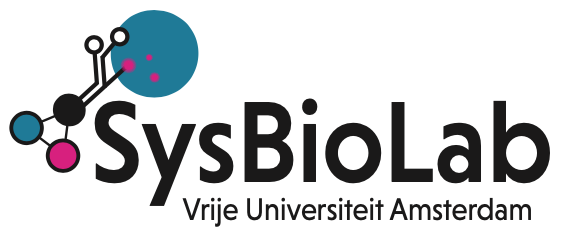We recently published a new paper, https://febs.onlinelibrary.wiley.com/doi/10.1111/febs.16401. Below you find a short reflection on this paper.
Microbial behaviour has been shaped by evolution. Our understanding is that the best adapted genetic variants are outcompeting the others — which explains their frequency increase and their selection. These fit variants generate novel genetic variants, which perform even better, equally good or worse. So perhaps we can rationalise the behaviour of microbes from the viewpoint of fitness maximisation by natural selection? More specifically, maybe we can understand phenotypic adaptations, e.g. protein expression, of particular microorganisms as fitness-maximising adaptations?
At least two problems are associated with this view. The first problem is that fitness of a genotype is related to the performance over a long period. Fitness may therefore not be measurable at one particular moment in time. Instead, we should take the evolutionary history into account — recreate it somehow in the lab—, but these conditions we do not know. So assessing the fitness of a microbe is perhaps not so straightforward and fundamentally impossible? A second problem is that the winning genotype may not be close to an optimal fitness, it was after all merely better than its competitors and not necessarily optimal. How then can we make sense of microbes in the light of fitness?
In a recent paper, we took a very simple, perhaps-ignorant approach. At the outset we realised that: i. long-term fitness over a particular period equals the time-averaged growth rate over that period and ii. growth rate depends on metabolic protein concentrations that are limited by biosynthetic constraints. One corollary of this is that expression of unneeded proteins should reduce the immediate growth rate and another is that an optimal, immediate-growth-rate maximising protein expression level exists for needed proteins. Both have been experimentally verified.
However, this optimal expression level maximises the immediate growth rate, which is not necessarily a strategy for long-term fitness (average growth rate) maximisation — which is what truly matters in evolution.
This was our simple idea: We assumed that Escherichia coli does not have a recollection of its precise environmental history and generally lives in unpredictable environments. Given this, it made sense to us that E. coli may strive for long-term fitness maximisation (average growth rate maximisation) by maximising its immediate growth rate by optimal expression of metabolic proteins. An implicit hypothesis was that biochemical regulation can optimise metabolic systems, for which we had obtained theoretical evidence already. Finally, we were aware of literature showing immediate-growth-rate-maximising expression of particular other proteins. What was not known is whether cells can do this robustly, so across a great many conditions — representing an unpredictable environment.
To test this, we took a protein that is ubiquitously expressed and expensive for the cell to make: its membrane embedded FoF1 ATP-synthase, which makes ATP at the expense of the proton motive force, which is maintained by oxidative phosphorylation. This process is the only ATP synthesising step when ATP is not made via substrate-level phosphorylation in glycolysis. So during growth on gluconeogenic carbon sources. Since the growth rate on those carbon sources greatly varies, the ATP demand per unit time will too, and therefore the needed level of ATP-synthase may vary accordingly. We tested 28 different conditions and we found that in all cases the expression level of this vital protein lies within a few percent of the optimal level that maximises the immediate growth rate. So, an E. coli cell has a growth-rate-maximising expression level of its ATP synthase.
This work is intriguing and puzzling at the same time. In biology, we rarely know the objective of molecular control systems. That objective may be ultimately related to the performance of the organism, but how it relates to that is often not understood. Here we found such an objective: expression regulation of ATP-synthase has growth-rate maximisation as its objective. How it achieves this is not understood, but the regulation of other systems points to possible mechanisms. What’s puzzling is how our results can be reconciled with seemingly conflicting data indicating that other metabolic proteins may be over-expressed, such as enzymes in lower glycolysis and the overcapacity of the ribosome? Is this occurring because cells can then faster transit to new conditions? Why is this not the case for ATP-synthase, which is likely also needed during transitions? Or are those cases not really cases of overexpression, but is having a low v/Vmax ratio actually the optimal behaviour required for immediate growth rate maximisation? On all of these questions, the field does not yet have satisfactory answers.
Before this study, one could have argue that the fitness-maximisation question cannot really by answered because we do not know the evolutionary history, but this study (and others) suggests that perhaps many regulatory aspects of bacteria boil down to immediate fitness maximisation, because they live in such unpredictable environments. Perhaps their best bet on a high long-term fitness is to bet on immediate fast growth.

Recent Comments